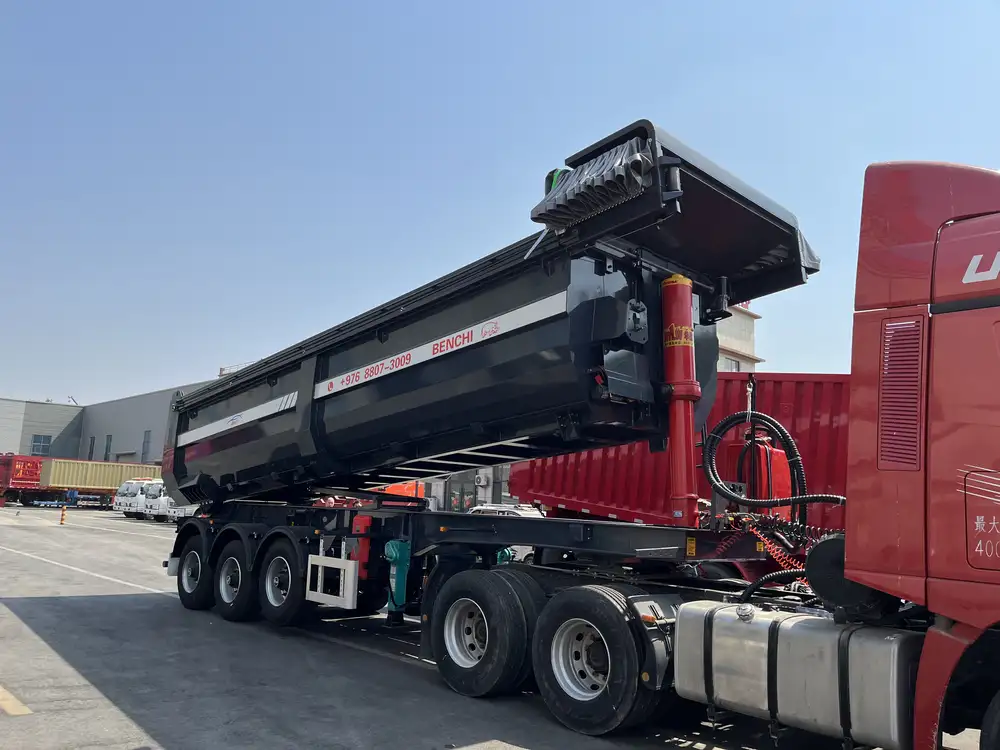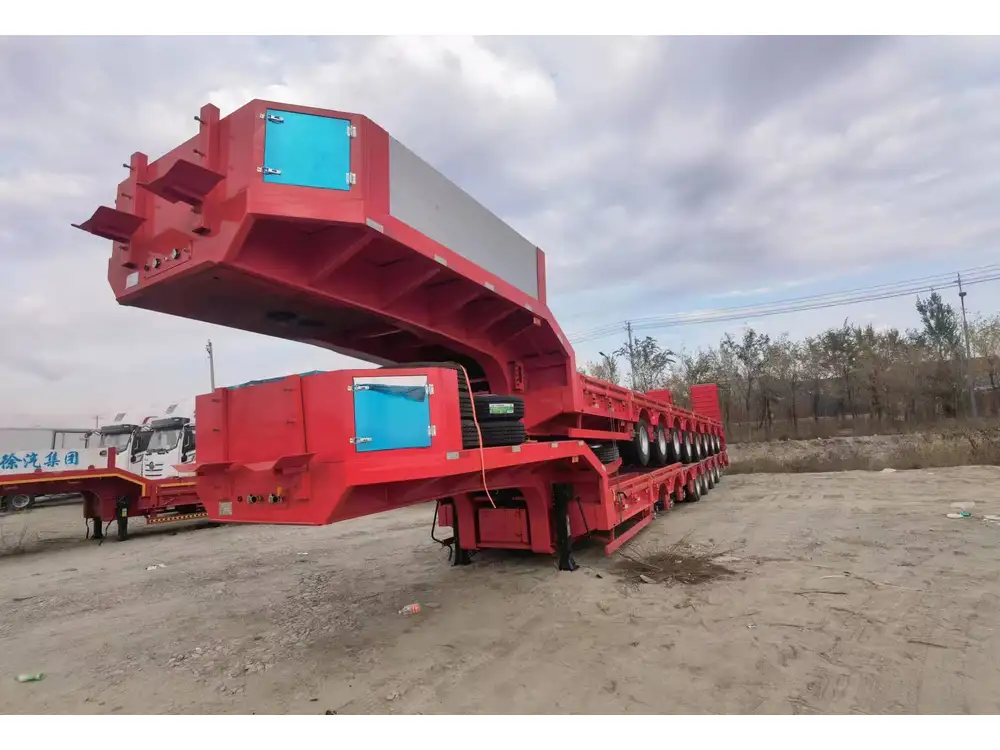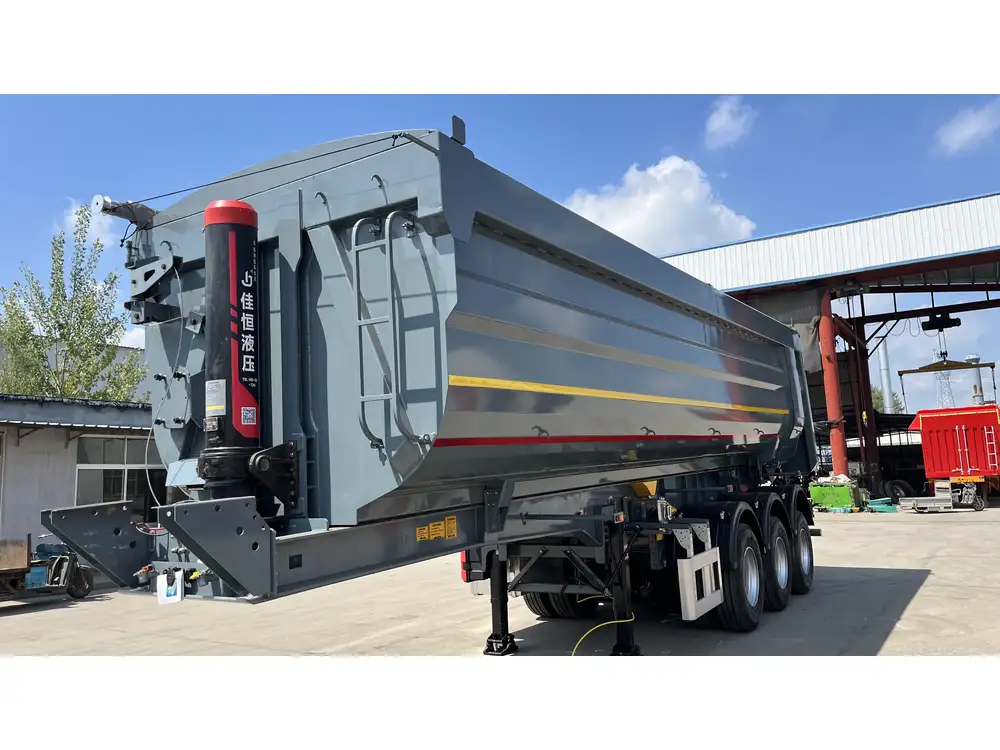The trucking industry constantly evolves, with advancements in technology and changes in regulatory frameworks driving new requirements for hauling freight. Among the pressing topics of discussion in this sphere is the dimension of long semi-trailers. This article aims to provide an in-depth exploration of dimensions, legal limits, and the various configurations that are found in long semi-trailers, addressing the questions and concerns that manufacturers, fleet operators, and logistics professionals encounter.
1. The Basics: What Constitutes a Long Semi-Trailer?
Definition and Standard Lengths
A semi-trailer is a trailer that does not have a front axle and is designed to be attached to a tractor unit to transport goods. Long semi-trailers are generally classified by their extended lengths, typically ranging from 53 to 65 feet or more, depending on jurisdiction and specific configurations, such as.
| Trailer Type | Standard Length | Maximum Length |
|---|---|---|
| Standard Semi-Trailer | 48 feet | 53 feet |
| Long Semi-Trailer | 53 to 65 feet | Up to 75 feet (in specific states) |
| Permit Trailers | Varies | Typically up to 85 feet with special permits |

Legal Framework and Regulations
Understanding the legal regulations surrounding the lengths of semi-trailers is vital. In the United States, the Federal Motor Carrier Safety Administration (FMCSA) establishes regulations that dictate the maximum dimensions. The maximum length for a semi-trailer, without requiring a special permit, is generally 53 feet. However, certain states allow extended lengths, especially for specific types of vehicles like those involved in the transportation of containerized cargo.
2. The Importance of Dimensions for Fleet Operations
Versatility in Cargo Transport
The dimensions of long semi-trailers affect significantly the types and volumes of cargo that can be transported. With standard lengths usually accommodating a variety of freight sizes, longer trailers can also handle specialized or bulk cargo, providing flexibility within a fleet.

Benefits of Long Semi-Trailers:
- Increased Payload Capacity: Longer trailers can typically carry more weight and volume, which can enhance revenue potential.
- Enhanced Load Flexibility: Various cargo configurations can be accommodated due to the length, including double stacking of pallets or transporting larger equipment and machinery.
Weight Considerations
One of the primary concerns for operators is how the dimensions relate to weight limits. Federal law typically limits the Gross Vehicle Weight (GVW) to 80,000 pounds for a combination of truck and trailer. The dimensions affect how weight is distributed across axles, which can impact vehicle handling and safety.
| Weight Categories | Limit in Pounds |
|---|---|
| Gross Vehicle Weight | 80,000 |
| Single Axle Limit | 20,000 |
| Tandem Axle Limit | 34,000 |
3. Factors Influencing the Dimensions of Long Semi-Trailers
Understanding the dynamics that influence trailer dimensions is crucial for any manufacturer or operator. The choice of a semi-trailer design is not merely a matter of size; several factors must be taken into account.

Type of Cargo
The nature of the cargo being transported dictates the configuration of the semi-trailer. For instance:
- Standard Freight: A 53-foot trailer is often used for pallets and standard box shipments.
- Refrigerated Goods: Reefer trailers may have specific dimensions and insulation requirements affecting their overall length and height.
Industry Regulations
Compliance with industry regulations is paramount. The dimensions need to adhere to not only federal regulations but also state-specific laws, which can vary significantly. For instance, some states allow longer trailers with special permits, impacting design choices for fleet managers.
Aerodynamics and Fuel Efficiency
Longer semi-trailers can influence fuel efficiency due to increased air resistance. Manufacturers continuously explore aerodynamic designs that can facilitate better fuel economy, incorporating features such as:
- Side skirts that reduce drag.
- Tail fairings that smooth airflow at the rear of the trailer.

4. Common Configurations of Long Semi-Trailers
Standard 53-Foot Trailer
The ubiquitous 53-foot trailer is the standard for most freight operations. It generally measures:
- Width: 102 inches (8.5 feet)
- Height: 13.5 feet (including cargo, total height)
These measurements conform to regulations while maximizing load capacity.
Double-Deck Trailers
Also known as double-stack trailers, these employ an upper deck that allows for increased volume.
- Lower Deck Height: 48 inches
- Upper Deck Height: 78 inches
This configuration allows for significant freight optimization; however, careful attention must be paid to weight distribution and legal height limits.

Extendable Trailers
These specialized trailers are designed to accommodate varying lengths:
- Standard Length: 48 feet
- Extendable Up To: 60 or even 70 feet
This versatility benefits operators engaged in transporting oversized freight or varied cargo loads.
5. Calculating Dimensions for Specific Uses
Determining the Right Size for Your Needs
Choosing the correct dimensions for a semi-trailer often requires a careful analysis of operational needs. Questions to consider include:
- What type of freight will you be moving?
- What are the weight implications for your cargo?
- Are you considering long-distance routes that may pass through states with varying regulations?
Creating a matrix can help visualize options based on cargo type and delivery routes, facilitating informed decisions.
| Cargo Type | Recommended Trailer Type | Remarks |
|---|---|---|
| General Freight | 53-foot Standard Trailer | Versatile and widely accepted |
| Refrigerated Goods | Reefer Trailer | Requires insulation and temperature control |
| Oversized Equipment | Extendable Trailer | Flexibility in length for larger loads |

Weight Distribution and Axle Configuration
Correctly distributing weight across axles is instrumental for safety and compliance. Owners must ensure that they adhere to the:
- Single and Tandem axle limits as prescribed by federal and state laws.
- Spread axle configurations might also be employed to optimize load distribution.
6. The Future of Long Semi-Trailer Dimensions
Innovations on the Horizon
The trucking industry is embracing innovations that could redefine the dimensions and capabilities of long semi-trailers. Notable trends include:
- Telematics and Data Analytics: More precise tracking of load factors and performance metrics can lead to optimized designs tailored to user data.
- Sustainable Practices: Many manufacturers are exploring eco-friendly materials and designs that reduce weight while increasing durability.

Regulatory Changes
As transportation networks evolve and new technologies emerge, we anticipate changes in regulations which may further influence dimensions. These could include:
- Easing restrictions on trailer lengths in certain states.
- Establishing standards for environmental compliance related to dimensions.
Conclusion
Navigating the complexities of semi-trailer dimensions is essential for manufacturers, fleet operators, and logistics professionals focused on optimization and compliance. Understanding the different configurations, legal implications, and market demands allows businesses to make informed decisions that maximize efficiency and profitability. Staying ahead of trends and innovations will be pivotal for those wishing to thrive in an ever-evolving industry landscape. By investing in the right dimensions and adhering to industry standards, stakeholders can pave the way for sustainable growth and success in the world of transportation.



